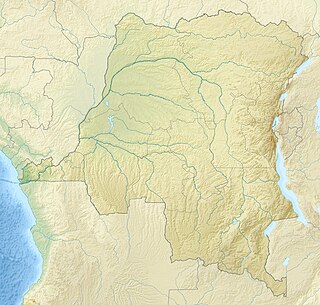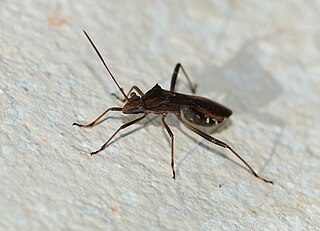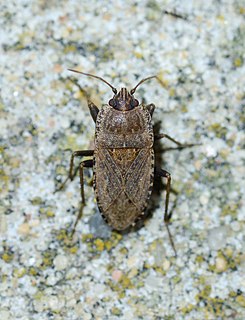
The mountain pygmy possum ; also simply known as the Burramys, is a small, mouse-sized nocturnal marsupial of Australia found in dense alpine rock screes and boulder fields, mainly southern Victoria and around Mount Kosciuszko in Kosciuszko National Park in New South Wales at elevations from 1,300 to 2,230 metres. At almost 14 cm (5.5 in), its prehensile tail is longer than its 11 cm (4.3 in) combined head and body length. Its diet consists of insects, fleshy fruits, nuts, nectar and seeds. Its body is covered in a thick coat of fine grey fur except for its stomach, which is cream coloured; its tail is hairless. On the underside of the female's body is a pouch containing four teats. This possum is the only extant species in the genus Burramys. It is also the only Australian mammal restricted to alpine habitat.

The dwarf gymnure is a gymnure found only at Mount Kerinci, Sumatra, Indonesia. It is listed by the International Union for Conservation of Nature as a critically endangered species due to a restricted range.

Hindeodus is an extinct genus of conodonts in the family Anchignathodontidae. The generic name Hindeodus is a tribute to George Jennings Hinde, a British geologist and paleontologist from the 1800s and early 1900s. The suffix -odus typically describe's the animal's teeth, essentially making Hindeodus mean Hinde-teeth.

Leptopelis parvus, also known as the Kanole forest treefrog, is a species of frog in the family Arthroleptidae. It is endemic to the Democratic Republic of the Congo and is only known from the Upemba National Park.
Remasellus parvus, the swimming Florida cave isopod, is an isopod endemic to "4 caves in the Ochlockonee and Aucilla-Suwanee drainages of Florida", United States. It is the only species in the genus Remasellus.
Fenusa is a genus of common sawflies in the family Tenthredinidae. There are about 11 described species in Fenusa.
Nomotettix is a genus of pygmy grasshoppers in the family Tetrigidae. There are at least three described species in Nomotettix.
Plenoculus is a genus of square-headed wasps in the family Crabronidae. There are more than 20 described species in Plenoculus.

Megalomus is a genus of brown lacewings in the family Hemerobiidae. There are more than 40 described species in Megalomus.

Pselaphus is a genus of ant-loving beetles in the family Staphylinidae. There are at least 20 described species in Pselaphus.
Nomotettix parvus, the low-ridged pygmy grasshopper, is a species of pygmy grasshopper in the family Tetrigidae. It is found in North America.
Euceratocerus parvus is a species of death-watch beetle in the family Ptinidae. It is found in North America.
Anthrenus parvus is a species of carpet beetle in the family Dermestidae. It is found in North America.
Agrilus parvus is a species of metallic wood-boring beetle in the family Buprestidae. It is found in North America.
Apteromechus is a genus of hidden snout weevils in the beetle family Curculionidae. There are more than 20 described species in Apteromechus.
Megarafonus is a genus of ant-loving beetles in the family Staphylinidae. There are about seven described species in Megarafonus.

Neomegalotomus is a genus of broad-headed bugs in the family Alydidae. There are at least two described species in Neomegalotomus.

Emblethis is a genus of dirt-colored seed bugs in the family Rhyparochromidae. There are more than 30 described species in Emblethis.
The small miner bee is a species of miner bee in the family Andrenidae. It is found in North America.
Plectus parvus is a species of nematode (roundworm) found in freshwater and terrestrial environments. It has been sampled in Europe and New Zealand. Along with the similar nematode Panagrolaimus detritophagus, in 2018 it was the first species of multicellular eukaryote to be thawed into a living state after prolonged cryopreservation. Female worms of this species were found in Pleistocene permafrost in the Kolyma River lowland. They were mobile and ate, after being frozen for 30–40 thousand years.








